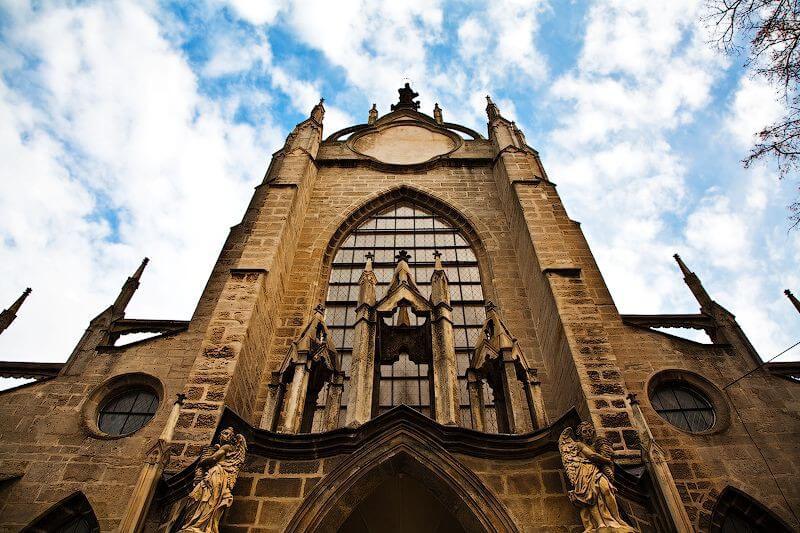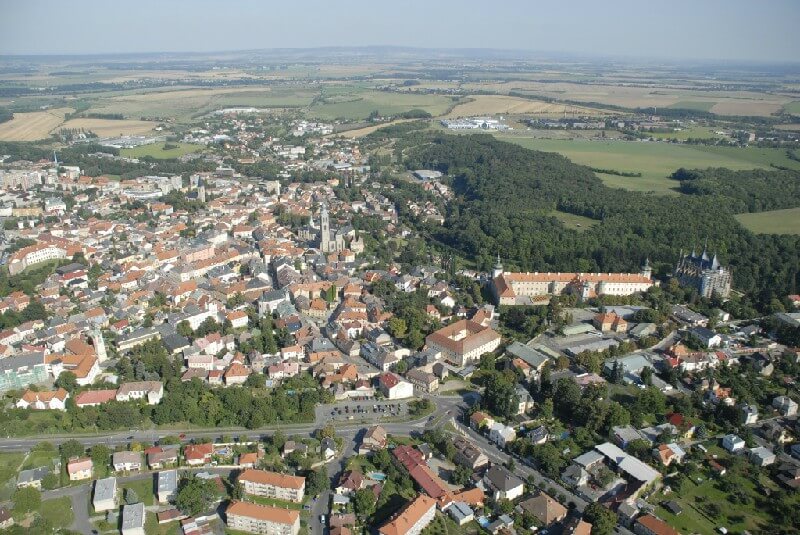Information about the resort of Kutna Hora in the Czech Republic
Rating: 9,6/10 (3357 votes)  TourismDespite the fact that the main attraction of Kutna Hora - Kostnitsa - is located in the suburban area and is perhaps the smallest church in the area, hundreds of thousands of tourists from all over the world come to it every year ... But this does not mean at all that there is nothing to see in the city - over the years of prosperity of the silver mines, enormous money was invested in Kutna Hora, and from the Middle Ages to the 17th century, whole architectural masterpieces lined up here, including those included in the UNESCO World Heritage List ...  AttractionsThe famous Ossuary is located not in Kutna Hora itself, but in its suburban zone, a place called Sedlec. People get here by regular regular buses, if you wish, you can even walk from the city center, the distance is very short. The ossuary is located in the small chapel of All Saints, which was erected in the 13th century, when the monastery order was located here. The appearance of the Ossuary was due to the popularity of the cemetery, consecrated by the Jerusalem land, as well as the outbreak of the plague, which forced people to be buried one above the other. Nobody knows the exact date of the appearance of the storehouse of bones, only local legends speak about this, but there is an exact date of creation of the chapel decorations that have become iconic, this is 1870. Literally all the interior decoration is made of bones - part of the altar, chandeliers, even the family coat of arms of the owners of the chapel. For excursions the Ossuary is open daily, regardless of the season. If the excursion is organized for large tourist groups, then it begins with a tour of the churches in the historical part of Kutna Hora, and the first of these churches will be St. Barbara's Cathedral ... A huge cult building of the late Gothic style was created for more than one century, the temple was laid even during the time of active silver mining, so the cathedral under construction was consecrated in honor of Barbara, the patroness of miners. The temple was finally completed only in the 19th century, at the same time it received the status of the largest cathedral in the district. Services are held here every day today, excursions for tourists are organized after agreement with the rector.  The oldest temple in Kutna -The mountains is Cathedral of St. Jacob, founded in 1330. The austere building, executed in the early Gothic style, was built with money from the owners of the silver mines. The final work was completed only a century after the laying of the first stone, and in the same year the cathedral was set on fire by the Hussites. It was fully restored only by 1500, and to this day it retains its recreated appearance. Stone House is the oldest of the secular buildings in Kutna Hora. It was erected in the 15th century as an example of the late Gothic style; houses of this kind in all of Europe can be counted on one hand, and this one is perhaps the best preserved example. For many centuries it belonged to the descendants of the family of one of the local officials, but now the Stone House is an interesting museum of medieval life. Separate rooms are dedicated to the crafts of Kutna Hora, which existed here until the 18th century. The owners of the Kutna Hora mines have done a lot for the city, it is thanks to their money that the most interesting sights have appeared here. One of these sights is the Stone Fountain. It was built at the end of the 15th century, and for that time it was a grandiose building. Water was supplied from a source located several kilometers away, and the fountain itself was used for many centuries as one of the main wells of Kutna Hora. The complex of structures called Vlassky dvor is one from the central points of excursion visits to Kutna Hora. The courtyard emerged as a defensive garrison for the city at the beginning of the 13th century. For a long time, this was also the main repository of all produced and mined silver. Nowadays Vlassky dvor is a museum of a medieval town. In addition, in the basement of the courtyard, an unusual museum was created called Mystica Kutna Hora, dedicated to the darkest pages of the history of the medieval city - the Inquisition, the fight against heretics, torture and murder weapons. Another unusual exhibition hall in Kutna Hora is the Alchemy Museum. It is located not far from the city center, and its exhibition is entirely devoted to this mysterious science of the Middle Ages. The laboratory is also interesting because the activities of the alchemists were covered by a chapel located higher in the same building. Both the chapel and the laboratory are now open to all comers. One of the miraculously preserved silver mines of Kutna Hora has now been turned into a mining museum, it is called Silver Road. The museum's management primarily set the goal of getting as close as possible to the horrific working conditions of miners, so the only modern invention here is lighting - no electric lifts and drilling rigs. We also recommend reading Information about the resort of Brno in the Czech Republic Topic: Information about the resort of Kutna Hora in the Czech Republic. |




